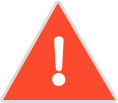Carrying out a calibration involves a succession of steps:
1- Choose the range of concentrations to cover for the compound to be dosed, and the calibration points of the range.
2- Calculate the dilutions and volumes to sample in order to have these calibration points available, knowing the concentration of the stock solution of the compound to be dosed (and making sure that there is a sufficient volume of stock solution to carry out the calibration).
3- Take samples of the stock solution and make dilutions, to obtain the range of different calibration points; stir the different standard solutions prepared in this way.
4- Take an aliquot of each solution in order to analyze the different calibration points with the measuring device (e.g. UV-spectrophotometer, after having placed an aliquot of each standard solution in a suitable cuvette).
5- Plot the measurement results for each point in the range to draw the calibration curve.
6- Analyze unknown samples with the same measuring instrument (and on the same day), so as to quantify the compound to be dosed in these samples using the calibration curve.
1- Choose the range of concentrations to cover for the compound to be dosed, and the calibration points of the range.
2- Calculate the dilutions and volumes to sample in order to have these calibration points available, knowing the concentration of the stock solution of the compound to be dosed (and making sure that there is a sufficient volume of stock solution to carry out the calibration).
3- Take samples of the stock solution and make dilutions, to obtain the range of different calibration points; stir the different standard solutions prepared in this way.
4- Take an aliquot of each solution in order to analyze the different calibration points with the measuring device (e.g. UV-spectrophotometer, after having placed an aliquot of each standard solution in a suitable cuvette).
5- Plot the measurement results for each point in the range to draw the calibration curve.
6- Analyze unknown samples with the same measuring instrument (and on the same day), so as to quantify the compound to be dosed in these samples using the calibration curve.
There are three types of calibration:
External calibration: the standard solutions only contain the compound(s) to be dosed – for each compound, there are standard solutions with a given increasing compound concentration.
Internal calibration: the standard solutions contain the compounds to be dosed, at increasing concentrations, as well as an internal standard always added at the same concentration in each calibration solution (and also in the samples to be dosed).
Standard additions: the compound to be dosed is used as a standard – the sample is first analyzed, then a known concentration of the compound is added and the analysis is repeated, and so on until several successive additions are made to the same sample.
External calibration: the standard solutions only contain the compound(s) to be dosed – for each compound, there are standard solutions with a given increasing compound concentration.
Internal calibration: the standard solutions contain the compounds to be dosed, at increasing concentrations, as well as an internal standard always added at the same concentration in each calibration solution (and also in the samples to be dosed).
Standard additions: the compound to be dosed is used as a standard – the sample is first analyzed, then a known concentration of the compound is added and the analysis is repeated, and so on until several successive additions are made to the same sample.






